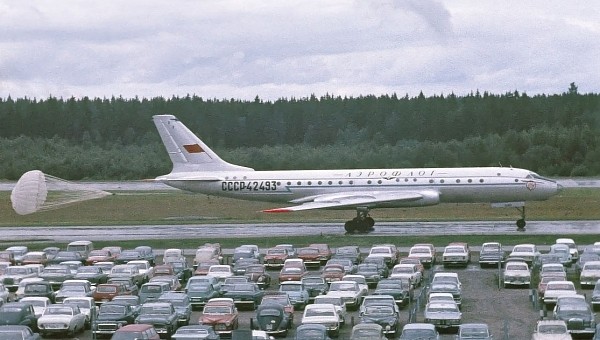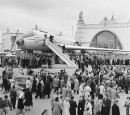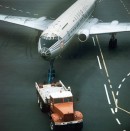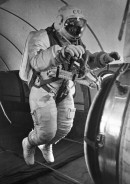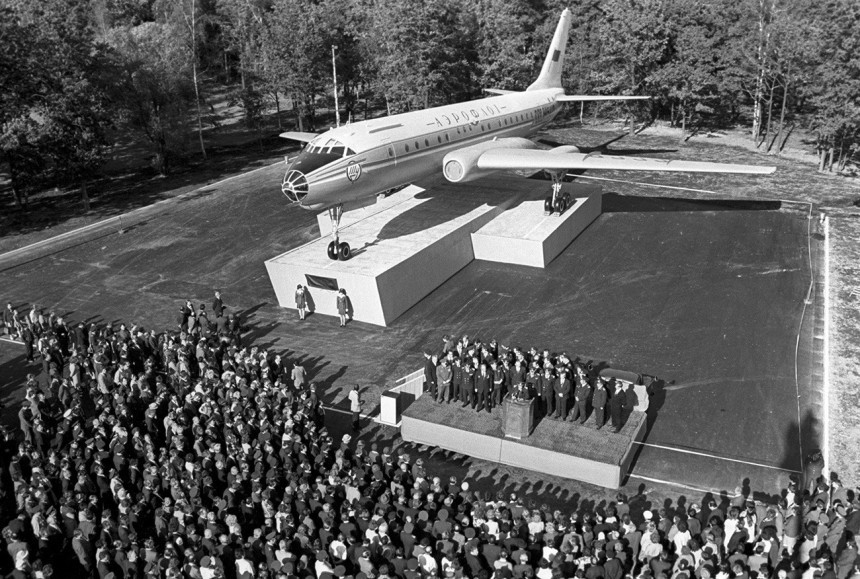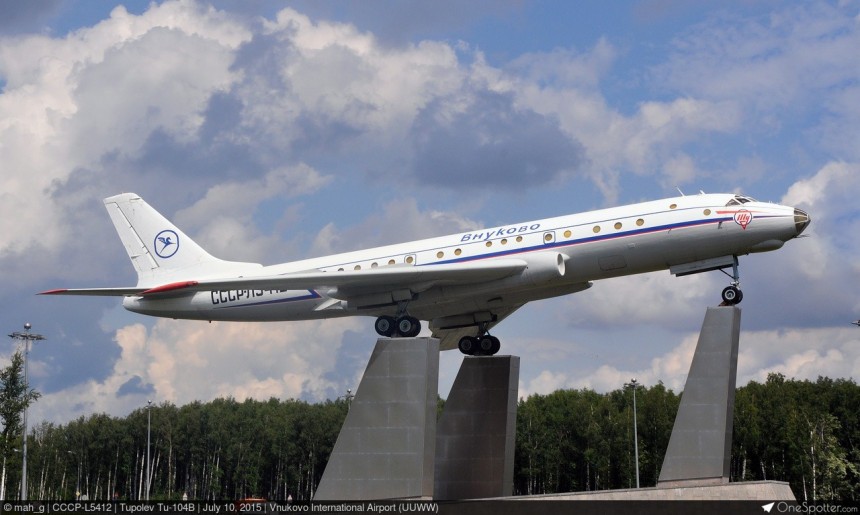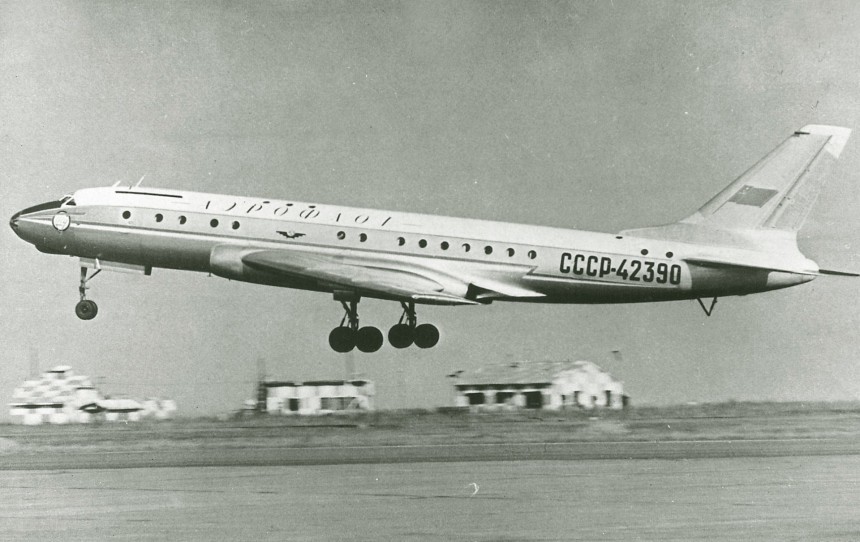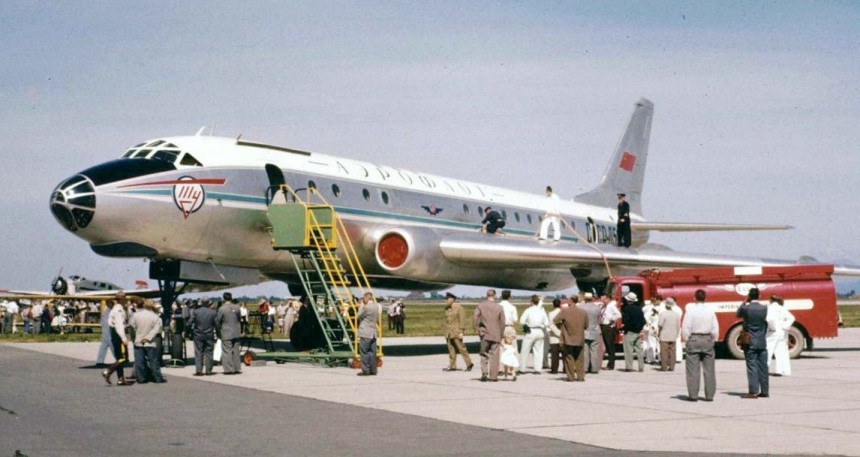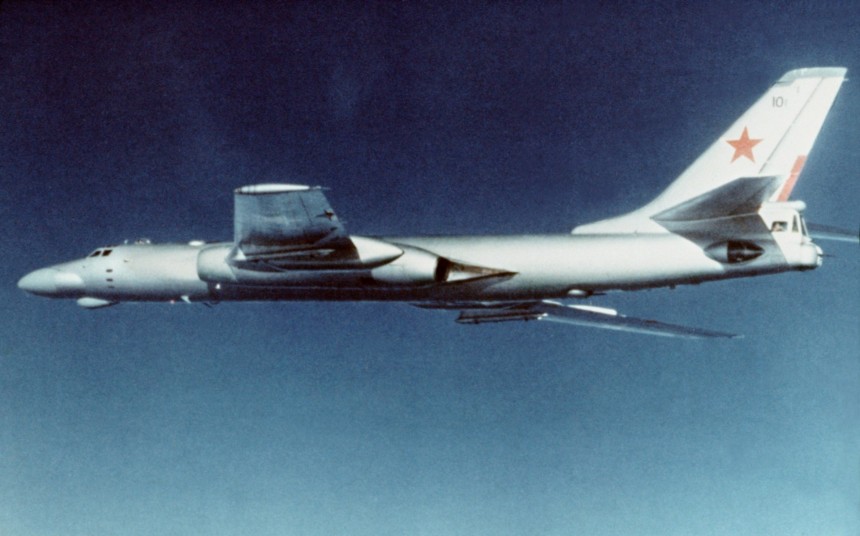The Soviet Union was, without a doubt, the biggest challenger to everything humanity had achieved until the gigantic country appeared on the world's map. A new leadership paradigm, a never-before-seen frenzy towards everywhere and nowhere in particular, and an obsessive-compulsive habit of doing things the exact opposite of everyone else.
However, there are also remarkable achievements bearing the "Made in USSR" badge – not necessarily in the word's positive sense, but rather in the out-of-(mainstream) logic. In many fields, the Soviets were pioneers, but the costs of their conquering explorations were sometimes unquantifiable.
Modern aviation is one of the domains where the USSR put its mark with unquestionable authority, sparking a revolution in air transport. But, like most revolutions (particularly Soviet- and Russian-related ones), this also took a heavy toll on human lives.
In the early 50s, airlines were acquainted with the new wonder kid of flight, the jet engine. Although the technology had been in use since WWII, it was a military affair, by and large. That was until the Brits flew the De Havilland Comet in 1952, the first commercial airplane that ditched pistons in favor of the turbojet.
In a strange coincidence, that same year saw the rise – literally – of one of the USSR's most praised jets: the Tu-16 nuclear bomber. Seeing how the "profit-hungry imperialists" pulled away in the technological development race, the Soviet leadership quickly reacted.
Naturally, the Tupolev design bureau swiftly came up with a solution – a modified Tu-16 bomber adapted for carrying the proletariat around the vastness of the world's largest country. So, in 1953, Andrey Tupolev, the legendary aircraft designer and builder, presented his proposal for the jet airliner.
Two years flew by (pun intended), and the Tu-104 prototype took off in June 1955. By 1956, the revolutionary airplane was the undisputed king of civilian skies. Why undisputed? Because the Comet had already been grounded on safety grounds (after a series of crashes), and there was no one else.
The Soviets were more than happy to acknowledge the failure of the Western imperialists while simultaneously promoting communist superiority. In 1957, the Tu-104 stole the Paris Air Show simply by showing up – the first non-Western-built airplane to attend such an event (and a commercial jet, at that).
It even served as a diplomatic slap-in-the-face when it touched down in Washington, D.C., a few months after the Paris show-off. It was a monumental "Say Uncle!" moment that should have shut the Occident's mouth for good. And, just like all Soviet enterprises, it failed spectacularly.
The airplane was built in the most communist manner – "Make it work. And have it done by last year!" Picture this: the De Haviland Comet took almost nine years from concept to first flight. The Tu-104 was developed at three times the pace.
Sure, it helped that a nuclear bomber served as a parts donor: the wings, engines, avionics, landing gear, and instruments were transplanted on a larger fuselage. The pilots were transferred from the doomsday-bringing Tu-16 to the pride-of-the-Soviet-Heaven-on-Earth Tu-104, which sped up the testing phase.
Job done; there's the brand-new, capitalist-overcoming, marvel-of-Soviet-superior-engineering airplane (except for a couple of issues with it). In the genuine communist manner, for every one thing that worked, at least three didn't. The Tu-104 gained a grim record: one in every five aircraft built was lost in crashes.
The rear-swept wings were designed to allow high-speed flight, which posed a challenge when the plane closed in for a landing. Also, the larger hull had its center of gravity closer to the tail than the slender nuke carrier did. And this turned into a deadly flaw at 30,000 feet in the air (9,000 meters).
Because of this relative instability, the plane would suddenly raise its nose midflight – under specific weather conditions – and increase the angle of attack beyond its calculated values. As a result, the plane would stall, roll, and nose-dive to the ground.
During the plane's three-decade service, 1,137 people lost their lives in Tu-104 incidents. The issues had been known since the late 50s (soon after the aircraft's official debut). It took a catastrophe of apocalyptic magnitude to convince the communist leaders to retire it.
In February 1981, with a long list of obituaries strapped to its fame, the Tu-104 gave a fatal blow to the Soviet military. Forty-four high-ranking Naval commanders (including 16 admirals) of the mighty Pacific Fleet of the USSR flew to Leningrad from Vladivostok. A 4,000-mile trip (6,400 km) for an annual meeting of the nation's Navy top-tier leaders.
A week later, the same airplane took off for the return flight. Eight seconds after it went airborne, the plane crashed; there were no survivors. The Soviet Army immediately went on high alert as this cataclysmic tragedy nearly sunk the USSR's Far East fighting capability.
The authorities suspected spy mischief from the other side of the Iron Curtain, internal sabotage, and many different causes, but the sad reality was almost mind-blowing. The pride of the Soviet Navy, the Pacific Fleet, was decapitated by a most un-communist shopping spree performed by high-ranked socialist officers.
The military men used the trip to the western part of their mother country to go (shopping) big and go home. They bought whatever they could get their hands on, from oranges to fridges, filling the airplane's cargo bays to the brim.
Remember the infamous design flaw about the shift in the center of gravity that resulted in numerous accidents early in the plane's commercial career? This time, the payload capacity had been surpassed, and the jet was very tail-heavy, but the pilot was ordered to take off no matter what.
Because the aircraft's aft was much heavier than it should have been, the plane pitched up its nose before reaching takeoff speed. As a result, the massive plane became airborne – without any action from the pilots! – at a much steeper angle of attack and a dangerously low speed. A fatal combination that ultimately caused the overloaded Tu-104 to plummet to the ground.
It was the final blow to the already bad-luck-stricken Tu-104, and the airplane would fly no more. Its service record, checkered by praise and doom alike, ended soon after the 1981 tragedy.
Perhaps its most outstanding achievement was the zero-gravity training flights undertaken with Soviet cosmonauts. The aircraft prepared the daring pioneers for the historical first-ever spacewalk of 1965, a monumental step in space exploration. As grim-reaping as it may have been, the Tu-104 served to speed up the transition toward the era of jet-engine commercial flight, even if it did so at a tremendous cost.
The commercial derivative of a nuclear bomber, the Tu-104 jet plane could carry between 50 and 115 passengers (depending on the variant) over a maximum distance of almost 1,500 nm (1,700 miles, 2,750 km). Its initial service ceiling was an ambitious 39,000 feet (12,000 meters), but it was later revised to just 30,000 feet (9,000 meters).
The 40-meter-long (131-foot) airplane had a wingspan of 34,5 m (113 feet) and stood 12 meters tall (39 feet). The military-grade parts made it quite heavy for its size - nearly 44 tons of dry weight. It could carry 26 tons of fuel and up to thirteen tons of payload (passengers and cargo).
The two Mikulin AM-3M-500 turbojet engines developed 43,000 lbf of thrust between them (190 kN), enough for a top speed of 950 kph (590 mph, 510 knots). Typically, the Tu-104 cruised at around 850 kph (530 mph, 460 knots).
At its maximum takeoff weight of 78 tons, the Tu-104 needed an airstrip 1.4 miles long (2.2 kilometers). And, because it lacked reverse thrusters, the full-stop landing was achieved over a length of 4,500 to 6,000 feet (1,450–1,850 meters) without brake parachutes. This drawback determined a major worldwide change in aviation: building longer runways to accommodate the new generations bigger, heavier jet planes of the following decades.
Modern aviation is one of the domains where the USSR put its mark with unquestionable authority, sparking a revolution in air transport. But, like most revolutions (particularly Soviet- and Russian-related ones), this also took a heavy toll on human lives.
In the early 50s, airlines were acquainted with the new wonder kid of flight, the jet engine. Although the technology had been in use since WWII, it was a military affair, by and large. That was until the Brits flew the De Havilland Comet in 1952, the first commercial airplane that ditched pistons in favor of the turbojet.
In a strange coincidence, that same year saw the rise – literally – of one of the USSR's most praised jets: the Tu-16 nuclear bomber. Seeing how the "profit-hungry imperialists" pulled away in the technological development race, the Soviet leadership quickly reacted.
Two years flew by (pun intended), and the Tu-104 prototype took off in June 1955. By 1956, the revolutionary airplane was the undisputed king of civilian skies. Why undisputed? Because the Comet had already been grounded on safety grounds (after a series of crashes), and there was no one else.
The Soviets were more than happy to acknowledge the failure of the Western imperialists while simultaneously promoting communist superiority. In 1957, the Tu-104 stole the Paris Air Show simply by showing up – the first non-Western-built airplane to attend such an event (and a commercial jet, at that).
It even served as a diplomatic slap-in-the-face when it touched down in Washington, D.C., a few months after the Paris show-off. It was a monumental "Say Uncle!" moment that should have shut the Occident's mouth for good. And, just like all Soviet enterprises, it failed spectacularly.
Sure, it helped that a nuclear bomber served as a parts donor: the wings, engines, avionics, landing gear, and instruments were transplanted on a larger fuselage. The pilots were transferred from the doomsday-bringing Tu-16 to the pride-of-the-Soviet-Heaven-on-Earth Tu-104, which sped up the testing phase.
Job done; there's the brand-new, capitalist-overcoming, marvel-of-Soviet-superior-engineering airplane (except for a couple of issues with it). In the genuine communist manner, for every one thing that worked, at least three didn't. The Tu-104 gained a grim record: one in every five aircraft built was lost in crashes.
The rear-swept wings were designed to allow high-speed flight, which posed a challenge when the plane closed in for a landing. Also, the larger hull had its center of gravity closer to the tail than the slender nuke carrier did. And this turned into a deadly flaw at 30,000 feet in the air (9,000 meters).
During the plane's three-decade service, 1,137 people lost their lives in Tu-104 incidents. The issues had been known since the late 50s (soon after the aircraft's official debut). It took a catastrophe of apocalyptic magnitude to convince the communist leaders to retire it.
In February 1981, with a long list of obituaries strapped to its fame, the Tu-104 gave a fatal blow to the Soviet military. Forty-four high-ranking Naval commanders (including 16 admirals) of the mighty Pacific Fleet of the USSR flew to Leningrad from Vladivostok. A 4,000-mile trip (6,400 km) for an annual meeting of the nation's Navy top-tier leaders.
A week later, the same airplane took off for the return flight. Eight seconds after it went airborne, the plane crashed; there were no survivors. The Soviet Army immediately went on high alert as this cataclysmic tragedy nearly sunk the USSR's Far East fighting capability.
The military men used the trip to the western part of their mother country to go (shopping) big and go home. They bought whatever they could get their hands on, from oranges to fridges, filling the airplane's cargo bays to the brim.
Remember the infamous design flaw about the shift in the center of gravity that resulted in numerous accidents early in the plane's commercial career? This time, the payload capacity had been surpassed, and the jet was very tail-heavy, but the pilot was ordered to take off no matter what.
Because the aircraft's aft was much heavier than it should have been, the plane pitched up its nose before reaching takeoff speed. As a result, the massive plane became airborne – without any action from the pilots! – at a much steeper angle of attack and a dangerously low speed. A fatal combination that ultimately caused the overloaded Tu-104 to plummet to the ground.
Perhaps its most outstanding achievement was the zero-gravity training flights undertaken with Soviet cosmonauts. The aircraft prepared the daring pioneers for the historical first-ever spacewalk of 1965, a monumental step in space exploration. As grim-reaping as it may have been, the Tu-104 served to speed up the transition toward the era of jet-engine commercial flight, even if it did so at a tremendous cost.
The commercial derivative of a nuclear bomber, the Tu-104 jet plane could carry between 50 and 115 passengers (depending on the variant) over a maximum distance of almost 1,500 nm (1,700 miles, 2,750 km). Its initial service ceiling was an ambitious 39,000 feet (12,000 meters), but it was later revised to just 30,000 feet (9,000 meters).
The 40-meter-long (131-foot) airplane had a wingspan of 34,5 m (113 feet) and stood 12 meters tall (39 feet). The military-grade parts made it quite heavy for its size - nearly 44 tons of dry weight. It could carry 26 tons of fuel and up to thirteen tons of payload (passengers and cargo).
At its maximum takeoff weight of 78 tons, the Tu-104 needed an airstrip 1.4 miles long (2.2 kilometers). And, because it lacked reverse thrusters, the full-stop landing was achieved over a length of 4,500 to 6,000 feet (1,450–1,850 meters) without brake parachutes. This drawback determined a major worldwide change in aviation: building longer runways to accommodate the new generations bigger, heavier jet planes of the following decades.
